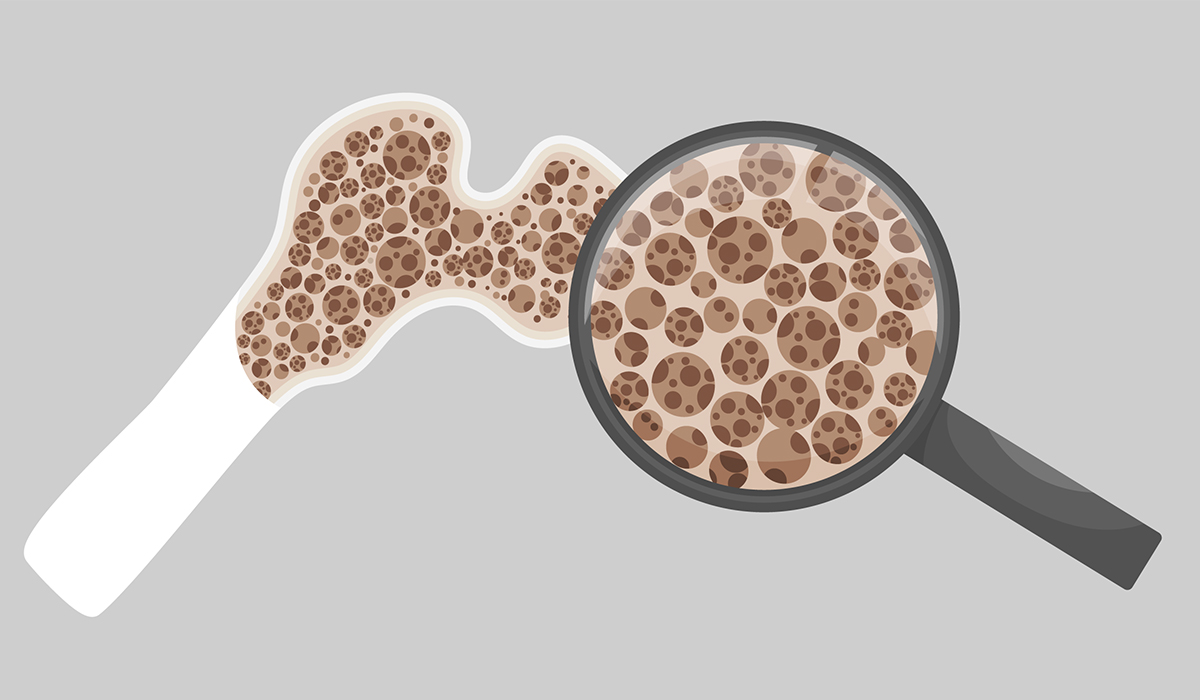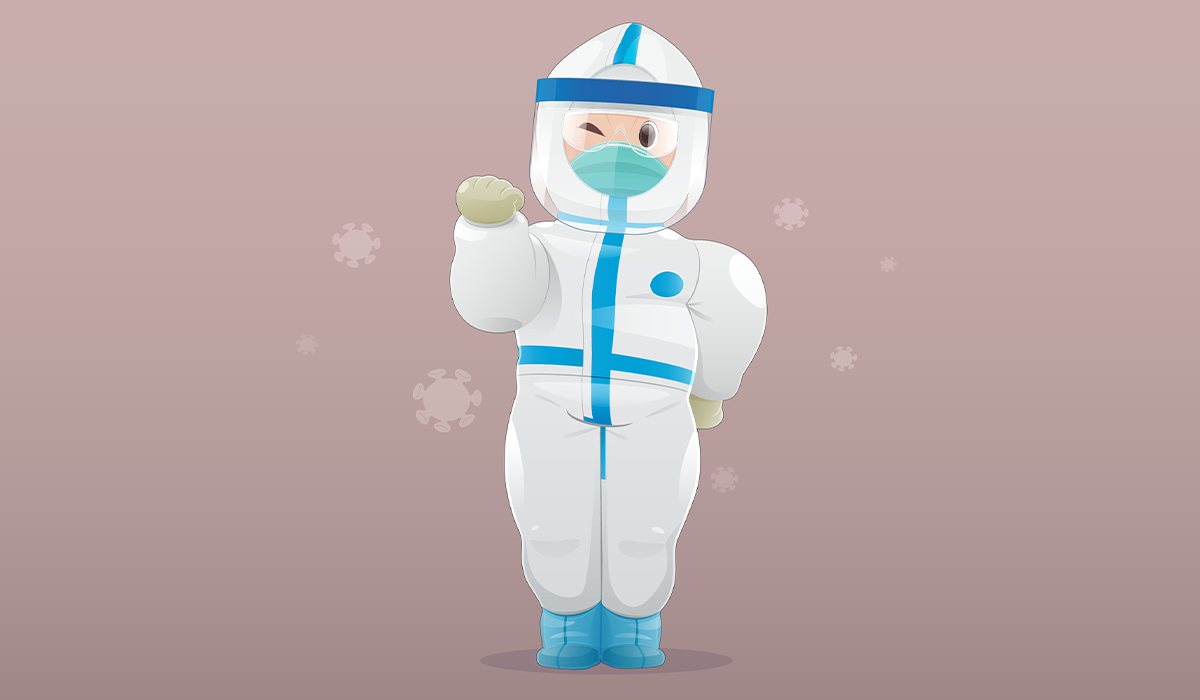In most scenarios, spiders bite people in an act of self-defense. You can get bitten when you try to touch a spider or crush it. However, spiders can also attack you if you unknowingly step on them or accidentally harm them.
The arachnid bite is usually difficult to discern from an insect bite. Both cause a red and inflamed bump on the skin, which can be either itchy, painful, or both. Additionally, identifying a specific spider or bug species that bit you can be challenging based on the bump alone. Seeing the critter and its characteristic appearance features helps determine its species, but only some are so lucky. A spider may get away or be difficult to spot, especially in bushy places. In either case, you may be left with a painful bite and no clues about the cause.

How to proceed if you don’t know which spider has bitten you? If you experience any symptoms aside from itching and painful bumps, you should contact your healthcare provider. They will help you identify the cause based on the symptoms you experience and recommend the most effective treatment against a specific spider species. See the below paragraph for more information about the most dangerous spiders in the USA and which symptoms are associated with their venom.
Symptoms By Spider Species
Although spider and bug bites share many similarities, bites caused by some arachnids can be recognized based on several features. These include the symptoms you develop after a bite and sometimes the look of a bump on the skin.
Tarantula
Tarantula is one of the most recognizable spider species in the entire world. Often associated with grave consequences after it bites, this arachnid is not as dangerous as many people think. Its venom is quite weak compared to other spiders and usually looks and feels like a bee sting.
Tarantulas are not aggressive and are unlikely to bite you in the wild. Most of the bites occur at homes, caused by pet tarantulas. Aside from itchiness and mild pain, the following symptoms may also occur:
- Skin rash
- Trouble breathing
- Swelling at the bite site
- Swelling of throat and lips
- Rapid heart rate
- Eyelid puffiness
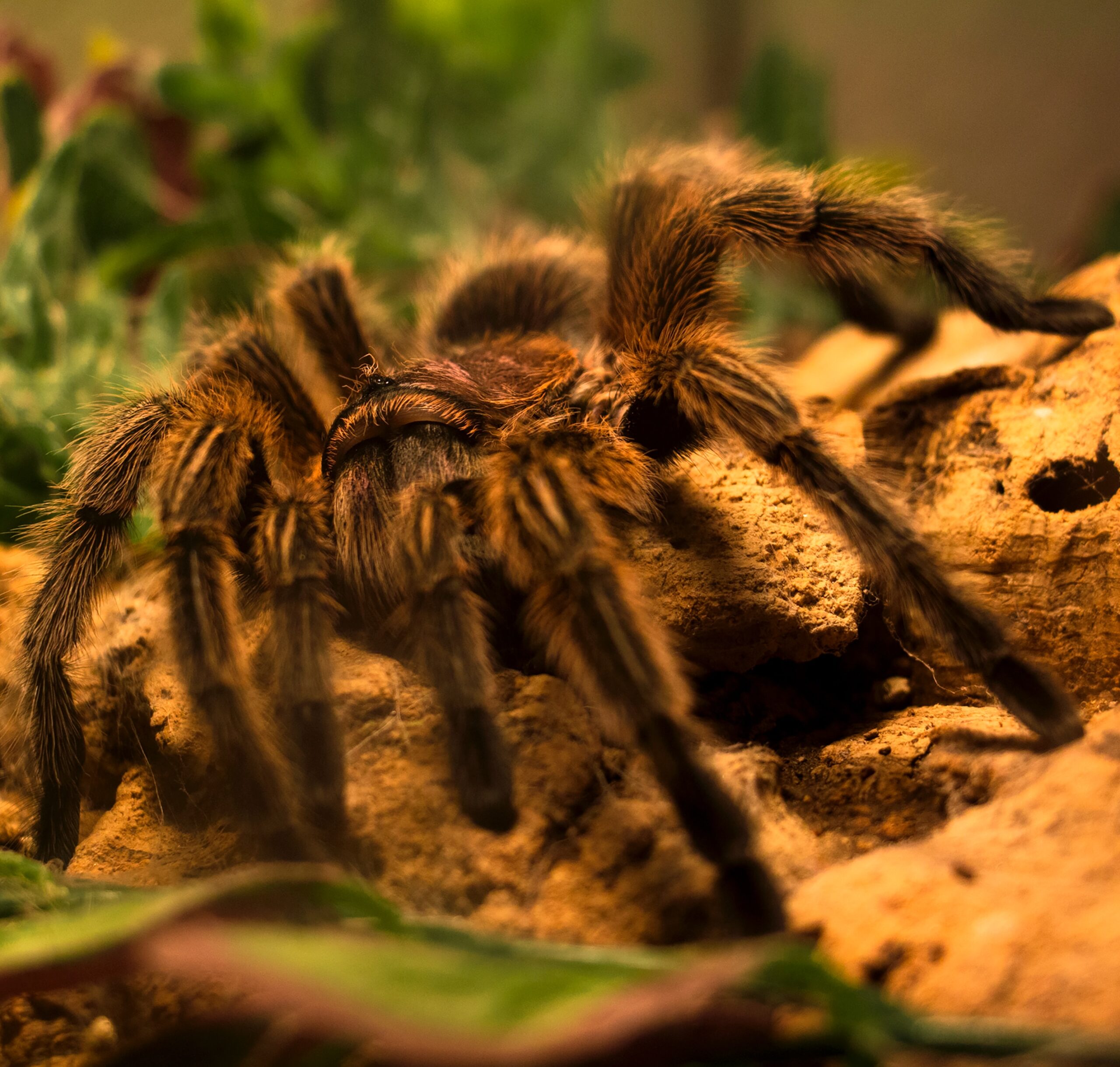
Black Widow
A black widow can be easily recognized by its red hourglass shape on its big round abdomen. Spiders of this species are shiny black and usually grow to be a half-inch long. They can be found anywhere in North America but are more common in southern and western regions.
Black widows enjoy secluded places and are usually found in woodpiles, attics, sheds, garages, inside storage boxes, and piles of fallen leaves.
Black widow bite can be difficult to spot at first. Its first signs are tiny red marks that feel like a pinprick. After an hour, it becomes more painful, with swelling spreading to more body areas like the abdomen, back, and chest. More symptoms may develop with time and include:
- Headache
- High blood pressure
- Numbness
- Restlessness
- Sweating
- Nausea and vomiting
- Seizures
- Increased saliva
- Pain and burning at the bite site
- Tremors
- Redness around the chest, back, or abdomen
Male black widow spiders are harmless. It is easy to tell the difference between male and female because male black widows are not black. Instead, they are usually gray or brown and don’t have a red hourglass shape on their back. If you get bitten by a female black widow, seek medical attention as soon as possible. You will need to receive an anti-venom to treat the symptoms. Quick reaction is especially important in children and older adults.
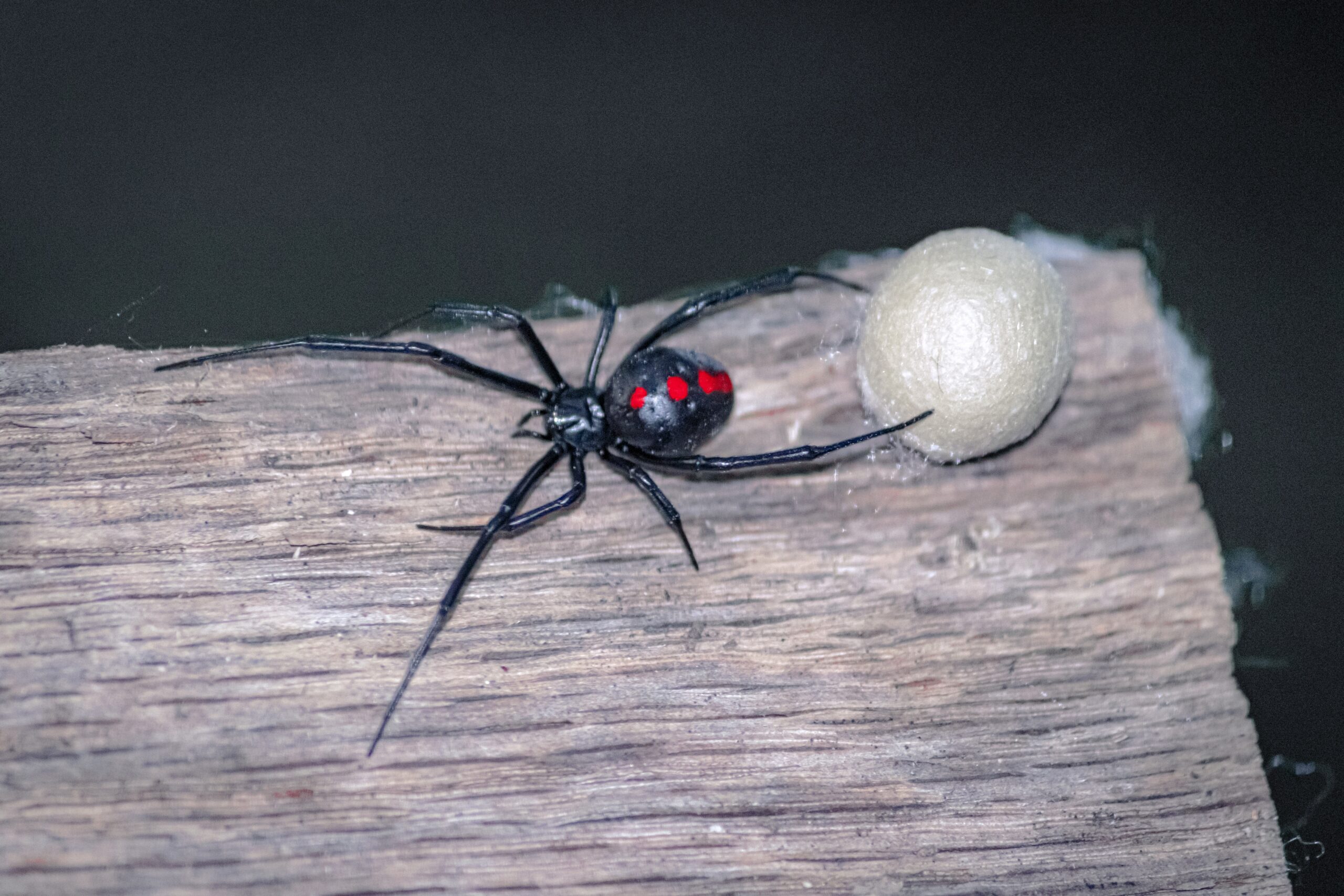
Brown Recluse
Brown recluse spiders rarely show signs of aggression but can bite your skin if you make them feel threatened. They have six eyes, two in the front and two on each side, and usually grow to a size of one-third of an inch. For hiding places, they prefer indoor, dark places such as basements, attics, garages, and storage rooms.
Brown recluse spiders are more common in certain states. These include Oklahoma, Louisiana, Kansas, Arkansas, Missouri, Tennessee, and Eastern Texas.
A brown recluse bite initially feels like a little sting, but more symptoms develop over the next eight hours. The bite site may turn red, itch, and cause pain. The characteristic symptom is also a red or purple bull’s eye-shaped ring around the blister.
Untreated bite may lead to complications because it gets progressively worse over time. You may experience the following symptoms:
Fortunately, complications caused by brown recluse bite don’t happen often and can be treated with antibiotics and adequate wound management. In rare instances, however, blisters can damage surrounding tissue, leading to its death. People with dead tissue may need to undergo surgery and hospitalization.

Hobo Spider
Hobo spiders are most commonly found in the Pacific Northwest region. They used to be considered dangerous species, but that has changed in recent years. According to research, the poison released by this species is not strong enough to cause severe health issues.
Between August and October, you have the highest chance of encountering hobo spiders – a mating season for this species. You may find them indoors in closets, behind furniture, and outside, usually in tall grass, rock piles, logs, and timber piles.
Although hobo spider bite is not dangerous, it may cause more symptoms than typical redness, swelling, and mild pain. Possible outcomes include:
- Weakness
- Joints pain
- Extreme nausea
- Sweating
- Headaches
- Purple blister at the site of the bite
- Visual disruption
- Memory problems
At first, hobo spider bite is difficult to spot. You won’t see visible changes on your skin in the first hour after the bite. The first symptom that develops is redness, which, after 8 hours, is accompanied by swollen and hardened skin. After 24 hours, the wound may turn black and discharge fluids.
If you think a hobo spider bit you, you should contact your healthcare provider as soon as possible to receive treatment.

Wolf Spider
Wolf spiders are similar to tarantulas and are common throughout the United States. They are usually between a quarter and one-third of an inch long, with eight legs and a long torso.
Wolf spider has eight eyes: two large black eyes in the middle, four smaller ones below, and one at each side of its head. Its characteristic features are stripes on its body, which you can use to distinguish this species from tarantula spiders.
The habitat of wolf spiders includes places under rocks, logs, leaves, and plants. They are also found in grass, sand, and gravel. If they live in houses, they prefer humid and warm areas such as basements, sheds, garages, storages, and house plants.
Wolf spider may tear your skin after it bites, causing redness, pain, and swelling. Sometimes other symptoms may develop, and these include:
- Headaches
- Dizziness
- Nausea
- Vomiting
- High temperature (fever)
- Fatigue
- Cramping
- Shaking
- Trouble breathing
- Sweating
- A rash which may develop at the site of the bite and spread to surrounding areas
The wound can take up to 10 days to heal. For some people, the symptoms that develop do not improve within that time and require adequate treatment.
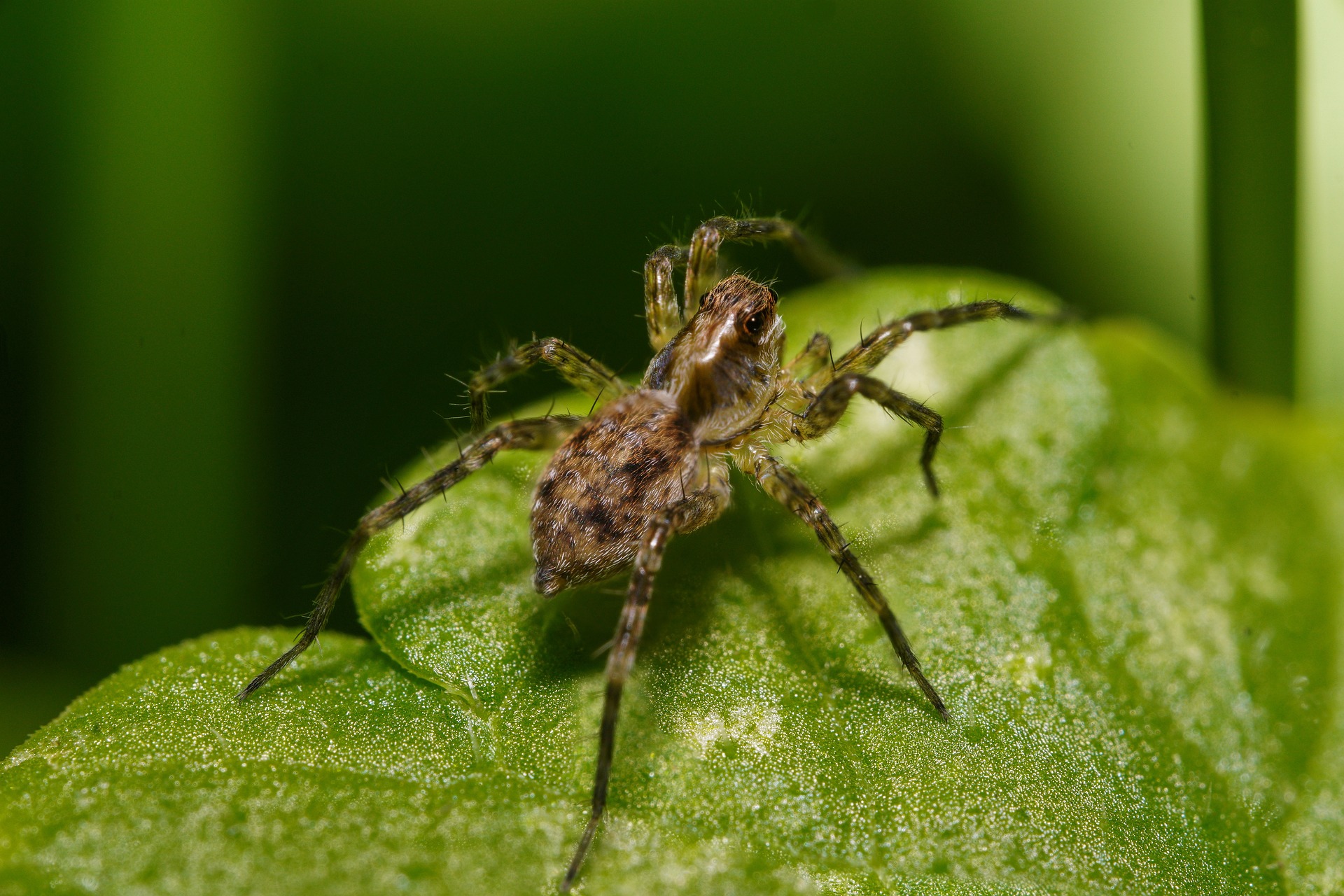
Camel Spider
Massive and pincer-like jaws are characteristic features of camel spiders. Although they belong to a non-venomous species, their bite can be a painful experience and leave a deep wound. Unile venomous spiders, the most significant risk associated with camel spiders is the bite itself, which can lead to an infection.
Camel spiders are common in the western United States and southern and central Mexico. You can recognize them by length (about 2 inches), sand color, and long torso. A bite caused by a this spider species may cause bleeding, swelling, and an infected wound.
Treatment
Most non-venomous spider bites heal on their own within a week. You can use the following self-care practices to treat the wound, blister, or swelling caused by a spider:
- Apply over-the-counter antibiotic cream on the site of the bite.
- To prevent infection, keep your damage clean by using soap and water.
- If you are experiencing irritating itching, use antihistamine such as Benadryl.
- Wrap a few ice cubes into a cloth and apply it to the wound for about 10 minutes. You can repeat the process whenever you feel the pain or itching.
- If you get bitten by a spider with more enormous jaws, such as a camel spider, you may experience intense pain. Use over-the-counter pain relievers to ease the symptoms.
A bite caused by a venomous spider is more complex to deal with. In addition to home remedies, you will need to receive medical attention, particularly an anti-venom, if you get bitten by a highly venomous species. Seek medical care immediately if you suspect that one of the following spiders was the cause:
- Hobo spider
- Black widow
- Tarantula
- Brown recluse
How to Prevent?
Preventing spider bites is crucial to avoid potential wounds and health issues associated with the venom of dangerous species. While most spiders are harmless, taking precautions is essential, especially if you live in regions where venomous spiders are more common. Here are some tips to help you prevent spider bites:
- Regularly clean and declutter your home, including basements, attics, and storage areas where spiders often hide.
- Seal any cracks or gaps in windows, doors, and walls to prevent spiders from entering your home.
- Use insect screens on windows and doors to keep spiders and insects out.
- Utilize spider traps and insect repellents in areas where spiders are frequently spotted.
- Wear gloves when working in gardens or handling outdoor equipment to avoid accidentally disturbing spiders in their natural habitats.
- Shake out outdoor clothing and footwear before putting them on, as spiders may seek refuge in these items.
- Wear long sleeves, pants, and closed-toe shoes to minimize skin exposure when hiking or camping in spider-prone areas.
- Learn to identify venomous spiders native to your region, such as Black Widows and Brown Recluses, so that you can take appropriate precautions.
- Trim vegetation around your home and keep outdoor areas well-maintained to reduce spider-friendly hiding spots.
- Use a flashlight when reaching dark or secluded spaces to avoid surprising spiders.
Remember that most spiders are not aggressive and will only bite in self-defense, so respecting their space and habitats is vital to avoid getting bitten. Additionally, if you are a spider pet owner, make sure to follow guidelines on how to take care of your spider safely.
Summary
Spider bites can result from encounters with non-venomous and venomous spider species, such as black widow, brown recluse, tarantula, camel spider, and hobo spider. Most bites occur because spiders feel threatened. Venom and fangs are their weapons to hunt the prey and fight back, which usually does not happen without a good reason.
Identifying the specific spider can be challenging, so seeking medical attention for severe symptoms is crucial. Treat non-venomous bites with self-care management and over-the-counter medicines.
Venomous bites, especially from black widows and brown recluses, require immediate medical attention and potentially anti-venom. Prevent bites by keeping your environment clean, sealing entry points, wearing protective clothing, and learning to recognize venomous spiders.
Sources
- CDC. (2018). Symptoms of Venomous Spider Bites.
https://www.cdc.gov/niosh/topics/spiders/symptoms.html - CDC. (2018). Types of Venomous Spiders.
https://www.cdc.gov/niosh/topics/spiders/types.html - National Capital Poison Center. Black Widow Spider Bites Can Be Dangerous.
https://www.poison.org/articles/black-widow-spiders - National Capital Poison Center. Brown Recluse Spider Bites
https://www.poison.org/articles/brown-recluse-spider-bites - National Capital Poison Center. Tarantula Bites and Scorpion Stings
https://www.poison.org/articles/tarantula-scorpion-bite-sting-treatment-181 - Melissa Pino. (2023). Wolf Spider Bite – Everything You Need to Know in 2023 w Pictures.
https://www.planetnatural.com/wolf-spider-bite/




